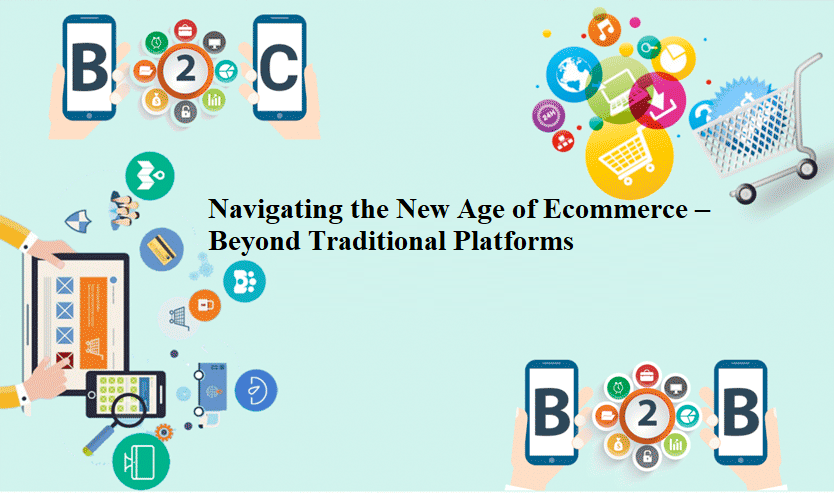
In the world of online shopping, change is the only constant. As brands strive to provide their customers with the best online experiences, the underlying platforms that power these digital storefronts are also undergoing a transformation. Enter the era where traditional ecommerce setups are no longer the gold standard. But what’s taking their place? Let’s dive in.
The Limitations of Traditional Ecommerce Platforms
When ecommerce first took off, traditional platforms were a godsend. They offered businesses a relatively easy way to set up online stores using pre-defined templates. But as the digital landscape evolved, so did the demands of online shoppers.
These traditional setups, with their fixed templates and rigid structures, began to show cracks. Scaling became a challenge, especially for businesses with unique needs. The “one-size-fits-all” model was no longer cutting it. Moreover, integrating new technologies with these platforms often felt like trying to fit a square peg into a round hole.
The Rise of Headless Ecommerce
This is where headless commerce makes its grand entry. If you’re imagining an online store without a head, you’re not entirely off track. Headless ecommerce essentially decouples the presentation layer of a website (what users see) from its backend (where all the business logic and data storage happen). This separation allows brands to design their frontend without any restrictions, while the backend does its job independently.
Benefits of Going Headless
The flexibility headless ecommerce offers is unparalleled. The decoupling of frontend and backend means that you can change one without affecting the other. Want to design a unique user experience that mirrors your brand’s aesthetic? You can freely craft and iterate your frontend without being bogged down by backend constraints.
Integration is another tremendous benefit. Traditional platforms sometimes feel like isolated islands, making it a challenge to smoothly integrate third-party tools or systems. However, headless platforms are designed with integration in mind.
Whether it’s a cutting-edge CRM system, a sophisticated marketing tool, or an AI chatbot that enhances customer service, integrating these into a headless system is typically smoother and more efficient. The modular nature of headless architecture ensures that you can plug in or swap out tools as needed, keeping your ecommerce ecosystem both flexible and robust.
Then there’s the speed factor. In today’s digital age, speed is currency. Websites built on headless systems often load faster, primarily because the frontend can pull only the necessary data it needs, without redundant processes slowing it down.
This optimized performance ensures visitors experience snappy page loads, reducing the chance they’ll leave out of frustration. Faster loading times not only improve user experience but also boost SEO rankings, making your site more discoverable.
Additionally, headless ecommerce allows for omnichannel selling. Brands aren’t restricted to just their online storefront. They can seamlessly push content or products to other platforms, be it social media, marketplaces, or even IoT devices. This ensures a consistent and unified brand experience across all touchpoints, which is crucial in today’s multi-device, multi-platform world.
A headless approach is future-proof. As technology continues to evolve at breakneck speeds, businesses need platforms that can adapt. With its flexible architecture, headless ecommerce is built to accommodate future technological advancements, ensuring that businesses remain at the forefront of the ecommerce revolution.
Other Noteworthy Ecommerce Innovations
While headless is making waves, other innovations are also reshaping the ecommerce landscape. Progressive Web Apps (PWAs) are offering mobile users app-like experiences without the need to download anything. Imagine browsing an online store that feels like a native app. That’s the power of PWAs.
Augmented Reality (AR) and Virtual Reality (VR) are no longer just buzzwords in gaming. Brands are utilizing these technologies to offer virtual try-ons and immersive 3D product views. Shopping for furniture? See how that couch looks in your living room through AR.
And let’s not forget the role of Artificial Intelligence and machine learning. From chatbots offering instant customer support to algorithms predicting what a shopper might want to buy next, AI is truly personalizing online shopping.
Strategic Considerations for Businesses
Switching to a headless platform, or any new system, is a big decision. It’s essential to weigh the costs, evaluate scalability, and consider the long-term benefits. Not every business might benefit from going headless, but for those seeking unprecedented flexibility and adaptability, it might just be the game-changer.
Final Thoughts
In conclusion, the world of ecommerce is exciting, dynamic, and ever-evolving. While traditional platforms have served businesses well, the future beckons with promise and limitless possibilities. Whether it’s the flexibility of headless systems or the immersive experiences offered by AR and VR, one thing’s for sure – businesses that stay adaptive and embrace innovation will be the ones writing the next chapter in the story of ecommerce.

